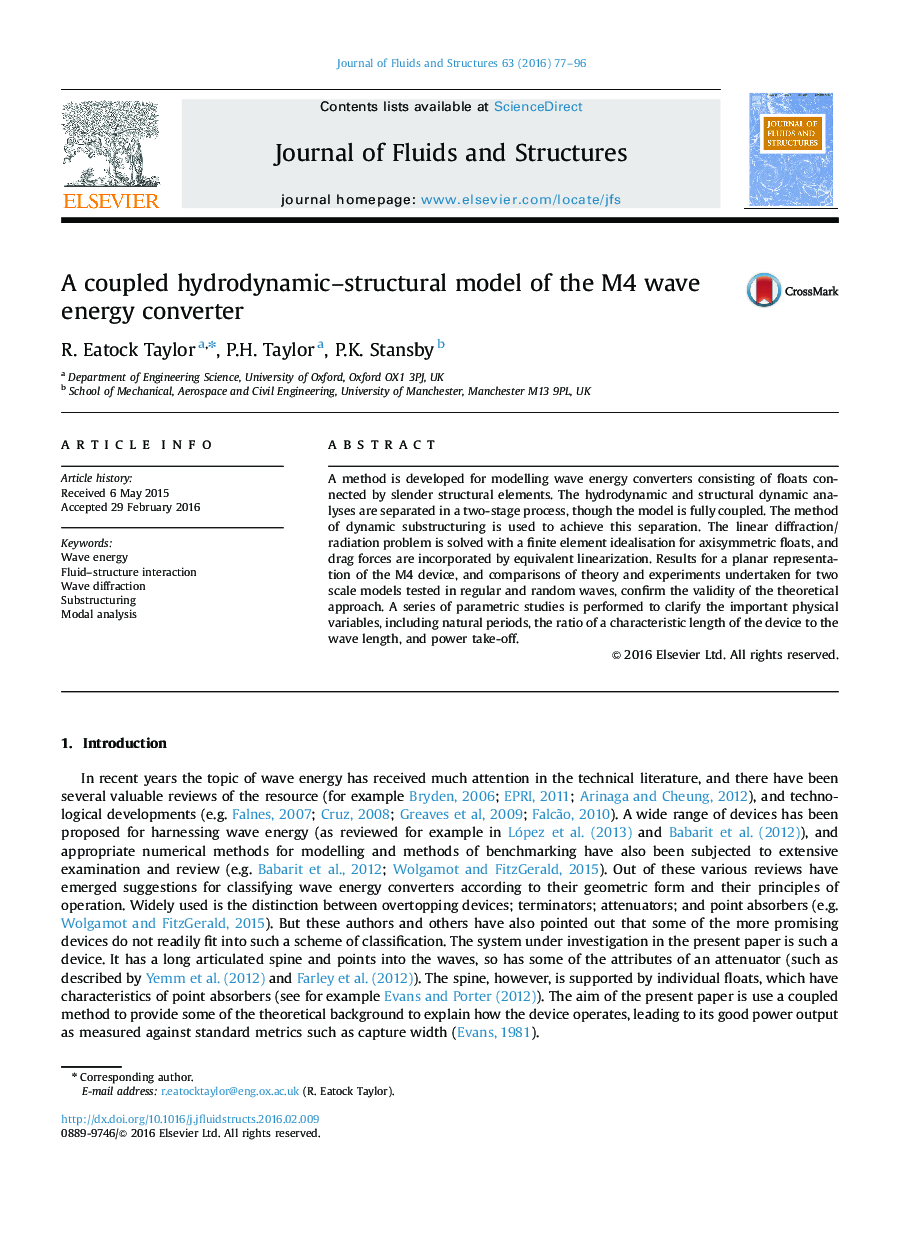| Article ID | Journal | Published Year | Pages | File Type |
|---|---|---|---|---|
| 7175906 | Journal of Fluids and Structures | 2016 | 20 Pages |
Abstract
A method is developed for modelling wave energy converters consisting of floats connected by slender structural elements. The hydrodynamic and structural dynamic analyses are separated in a two-stage process, though the model is fully coupled. The method of dynamic substructuring is used to achieve this separation. The linear diffraction/radiation problem is solved with a finite element idealisation for axisymmetric floats, and drag forces are incorporated by equivalent linearization. Results for a planar representation of the M4 device, and comparisons of theory and experiments undertaken for two scale models tested in regular and random waves, confirm the validity of the theoretical approach. A series of parametric studies is performed to clarify the important physical variables, including natural periods, the ratio of a characteristic length of the device to the wave length, and power take-off.
Related Topics
Physical Sciences and Engineering
Engineering
Mechanical Engineering
Authors
R. Eatock Taylor, P.H. Taylor, P.K. Stansby,
